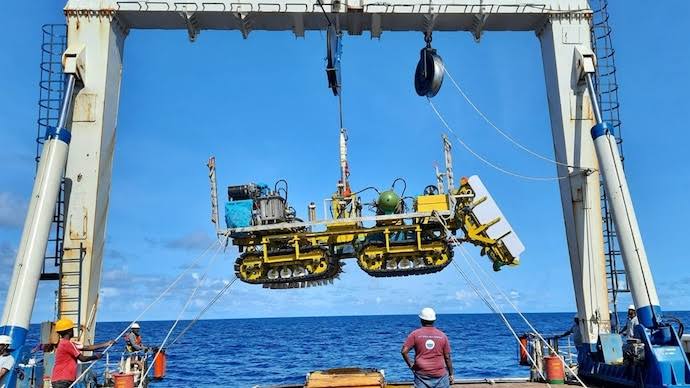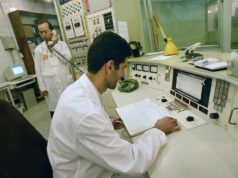India harvests valuable metallic nodules from Andaman Seabed

India’s deep sea mining trials: Varaha-3 collects polymetallic nodules in Andaman Sea.
Varaha-3 operated at a depth of 1,193 meters. It collected polymetallic nodules ranging in size from 60 to 120 mm. It’s part of India’s broader efforts to develop advanced technology for deep-sea exploration
With ongoing research and development, India aims to become a leader in sustainable seabed resource extraction while contributing to global efforts to meet rising demand for critical minerals needed for clean energy technologies.
The Deep Sea Mining Group of the National Institute of Ocean Technology (NIOT) has successfully conducted exploratory mining trials for polymetallic nodules in the Andaman Sea, utilizing a specially designed seabed mining machine named Varaha-3.
These nodules are rich in essential metals such as nickel, cobalt, and copper, which are crucial for various industries, including renewable energy and electric vehicle production.
The locations for these trials were previously surveyed and identified by the Geological Survey of India, highlighting the potential for valuable mineral resources beneath the ocean floor.
During the trials, Varaha-3 operated at a depth of 1,193 meters, where it collected polymetallic nodules ranging in size from 60 to 120 mm.
These nodules are rich in essential metals such as nickel, cobalt, and copper, which are crucial for various industries, including renewable energy and electric vehicle production.
The successful collection of these nodules marks a significant step forward in India’s deep-sea mining capabilities.
The Varaha-3 machine is part of India’s broader efforts to develop advanced technology for deep-sea exploration and resource extraction.
It is designed to operate in challenging underwater conditions and is capable of efficiently collecting nodules from the seabed while minimizing environmental impact.
This aligns with India’s commitment to sustainable practices in ocean resource management.
The exploratory trials not only demonstrate the technical capabilities of Varaha-3 but also pave the way for future commercial mining operations.
The Indian government has invested significantly in deep-sea mining technology as part of its Deep Ocean Mission, which aims to explore and utilise oceanic resources responsibly.
As part of this mission, NIOT is also working on an integrated mining system that will enhance the efficiency of nodule extraction and transportation to surface vessels.
This includes developing systems that can crush the nodules in situ and pump them to waiting ships through flexible riser systems.
The successful trials in the Andaman Sea represent a crucial milestone for India’s ambitions in deep-sea mining.



